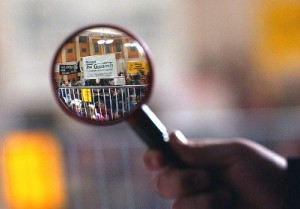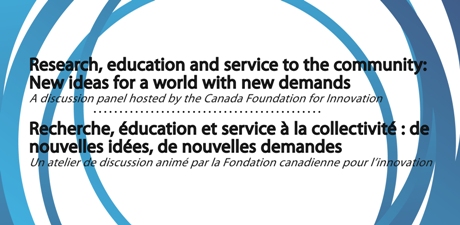Creating Accessible Presentations at Congress 2012

Krista Boniface
Congress 2012 Media Correspondent
Welcome to Congress! As the Athletics Complex fills with academics, researchers, historians, social scientists and those who can’t get enough of the zest for learning, the Congress planning office and the offices on both host campuses providing accessibility information are bustling. As a student co-writer of the Congress 2012 Accessibility Guide, it has been outstanding seeing the collaboration that has occurred to ensure that equal access for all Congress attendants is a major priority.
As members of the academic community, and over 70 associations spanning a rich spectrum of disciplines, we all have the opportunity to create an inclusive and intellectually engaging space for all in attendance. Creating a conference presentation that is accessible is a great way for your association to ensure that all delegates are accommodated and the accessibility of Congress 2012 is further extended beyond physical barriers.
Jay Dolmage, the Local Association Coordinator of the Canadian Disability Studies Association has provided 7 important principles to help you ensure that all in attendance at your anticipated panel are able to fully engage at the crossroads of learning.
1. Provide alternative formats of your presentation. Bring several full-text copies of your talk, and make sure a few of them are in large print (16 point or larger). If you do not have full-text copies of your presentation, provide a handout that outlines your main points and gives your contact information. Offer the copies at the beginning of your talk.
2. Pay attention to the room setup. The session chair should make sure there is space in the room for wheelchairs. Please keep the aisles clear for persons who may be using wheelchairs, canes, crutches, or motorized vehicles, and make sure the doorway area is unobstructed. If there will be Sign Language interpreters for the session, please help assure that the interpreters have reserved seating in the front row and direct visual and auditory access to the speaker’s area.
3. Describe all visuals, use captioning, and read slides aloud. If you are using PowerPoint, video, or other audio/visual materials, consider how to make this material accessible for audience members who do not see the images, hear the audio, or who have difficulty processing multiple channels of information simultaneously. All videos should be captioned and you should also provide oral descriptions of what appears on the screen. PowerPoint slides should be read aloud, and any images should be described. Keep PowerPoint slides uncrowded, large-type, and high-contrast.
4. Be prepared to work with a Sign Language interpreter. Meet with interpreters right before the beginning of your session, if necessary. It is helpful to give them a page that lists all the names and technical terms you will be using in your paper. An interpreter may not know words like “Foucault†or “episteme†for example, and clarifying terminology ahead of time will help the interpreter do a better job. Providing your interpreter with a copy of your talk before the presentation is extremely helpful.
5. Speak slowly enough that your audience can follow what you say. It is tempting to try to cram 10 pages of material into 15 minutes of presentation time, but the resulting rushed speech is hard for everyone to follow.
6. Attend to accessibility during Q&A sessions. During Q&A sessions, make sure that questioners have the opportunity to speak into a microphone. If this is not possible, restate questions for the full audience. Ask questioners to provide their names at the beginning of their contributions. After the session, keep aisles and the space around the presentation table clear so that persons with mobility impairments can move around easily. If at all possible, turn off equipment when you are not using it. This reduces background noise and distractions.
7. Don’t be shy about asking what people need. We’re all accustomed to the standard “Can everyone hear me?†question at the beginning of a presentation. Consider incorporating this sort of check-in more often, asking questions such as “Is this slide readable?†or “Do I need to slow down?†You can also ask interpreters to let you know if your speed is appropriate.
For more information and to consult the resources from which the above points were based, please refer to the scholarly sources below:
- Dolmage, Jay. “Mapping Composition: Inviting Disability in the Front Door.†Disability and the Teaching of Writing: A Critical Sourcebook. Ed. Cynthia Lewiecki-Wilson and Brenda Jo Brueggemann, with Jay Dolmage. Boston/New York: Bedford/St. Martin’s, 2008. 14-27. Note: This sourcebook is available for free upon request.
- University of Hawaii / Manoa Center on Disability Studies. “A Model for Accessibility.†http://www.cds.hawaii.edu/node/153
- Vitullo, Margaret Weigers. “Universal Design: Creating Presentations That Speak to All.†American Sociological Association. http://www.asanet.org/footnotes/julyaugust08/presentation.html
Image courtesy of joeduty on Flickr.









